Listen to the Podcast:
On the podcast this week we break down a commercial and look at some of the common shots that cinematographers have to tackle on every job.
Understanding these cinematography standards can help you lift your game and give you marketable skills in between your world changing passion projects.
There are quite a few reoccurring patterns in commercial cinematography and in today's episode we look at shooting inserts of phones, hands, tables and more.
Patreon Podcast: Cash is King
On the Patreon Podcast this week we go over rates. How much to charge, when to increase your rates, how to find out what going rates are and various other angles around money.
Cash is king and there is such a wide variation in budget levels and rates that it can be tricky for new cinematographers to price themselves in the market.
The podcast is rather lengthy for a Patreon Extended podcast but hopefully it answers some questions about money. Basically, if you have to ask how the rates are you probably don't have to worry about actually getting paid on the types of jobs you will be getting.
Patreon support helps keep this show going and I couldn't continue to put out new content each week without it. In turn for becoming a supporter of the show I put up extended podcasts for Patreon listeners.
You can gain access to all the extended podcasts that aren't available anywhere else online simply by becoming a supporter.
Check out the Wandering DP Patreon page and if you do decide to become a member please know that I truly appreciate the support.
Technical Info - The Gear
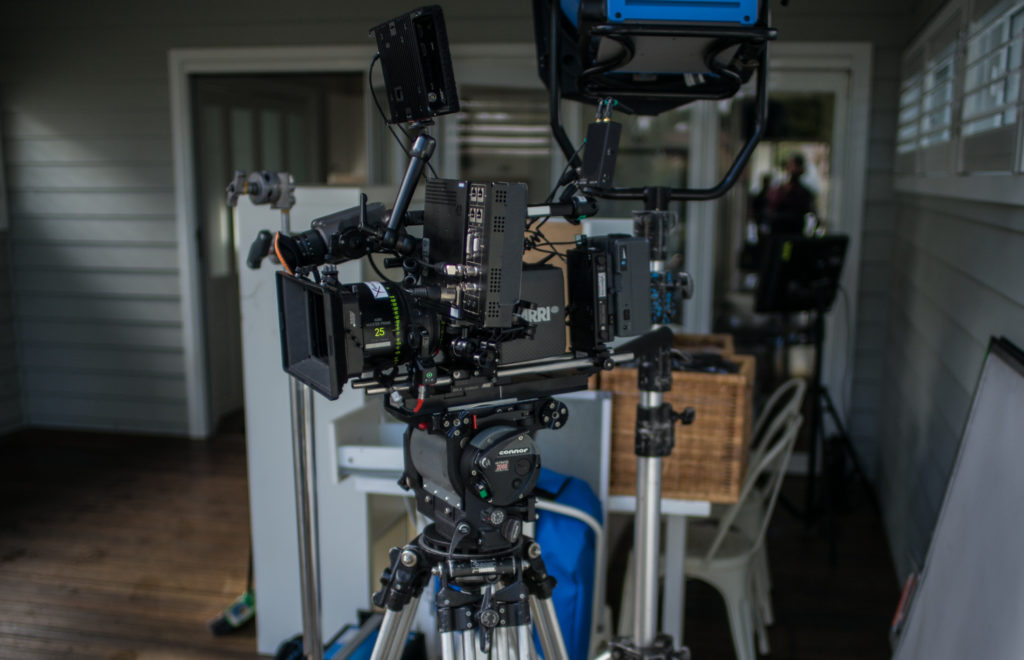
We had to maintain a blistering pace for this shoot and knowing that ahead of time we were able to shape the camera and lighting package to suit.
The camera package consisted of:
- Arri Alexa Mini - Shooting 3.2k Prores 444 Log C
- Arri Master Primes - 16, 21, 25, 32, 40 , 50, 65mm
- Arri WCU-4 & C-Force Motors - For quick control of the camera settings
- Easyrig Vario 5 - Everything was shot handheld
- True ND .3 + .6 - Because the Mini has internal NDs all you need is a .3 and .6 and you are set.
- Rotating Polarizer - For the car window shot.
- Arri LMB-25 - Lightweight and quick but strong enough to hold on to for the handheld moments.
- FSI BM090 - Because nothing says lightweight like a 14 pound 9" on board monitor.
The lighting package was a mix of HMI and LED:
- Arri M90 & M40 - The newer high powered HMIs
- Litegear Litemat 4 - Perfect little lightweight unit for the daytime stuff.
- 12x12 Bleached Muslin - A nice alternative to the Ultra bounce punch.
- 8x8 Magic Cloth Diffusion - A nice bit of diffusion used on all the interiors.
- 4x4 Diffusion Frame (Hilite) - Used for the car interior shot.
The Breakdown - Commercial Cinematography Standards
In the Car - The Two Shot
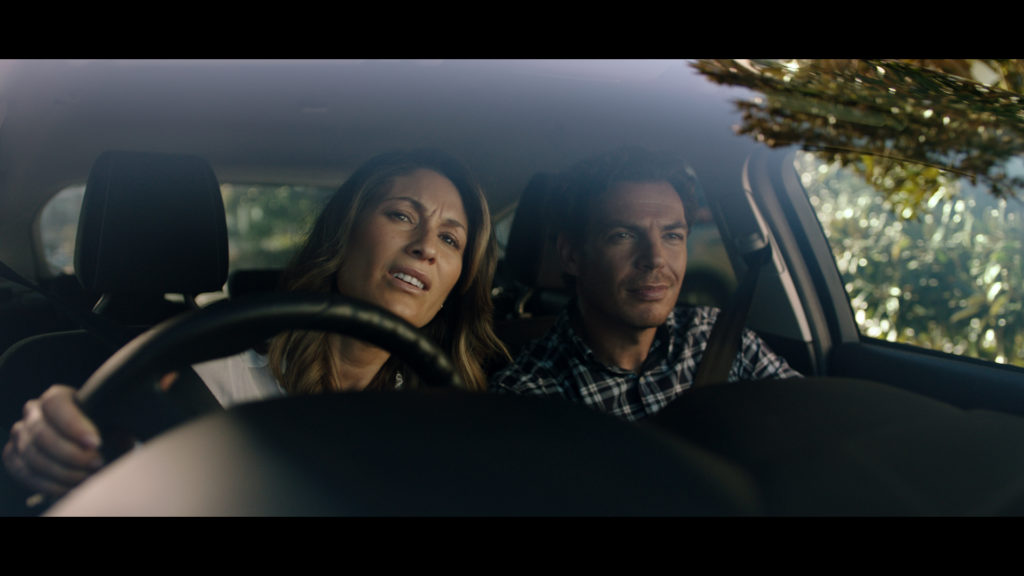
The Shot
We started with a two shot of a couple parked in their car. The commercial was a bit of a fast moving montage so we weren't concerned with matching anything else in this location.
We just needed it to look polished.
The Lighting
We were moving very quickly over the two days of the shoot and schedule meant we had to be parked on this side of the road. IT was back lit for the talent and car but the BG was getting smashed.
We didn't have time to take down the BG level so we pumped up the key with a 12x12 Bleached Muslin bounce. Then to add some shape we dropped in some floppies for contrast and softened the direct sun on the dashboard with a 4x4 frame.
The Results
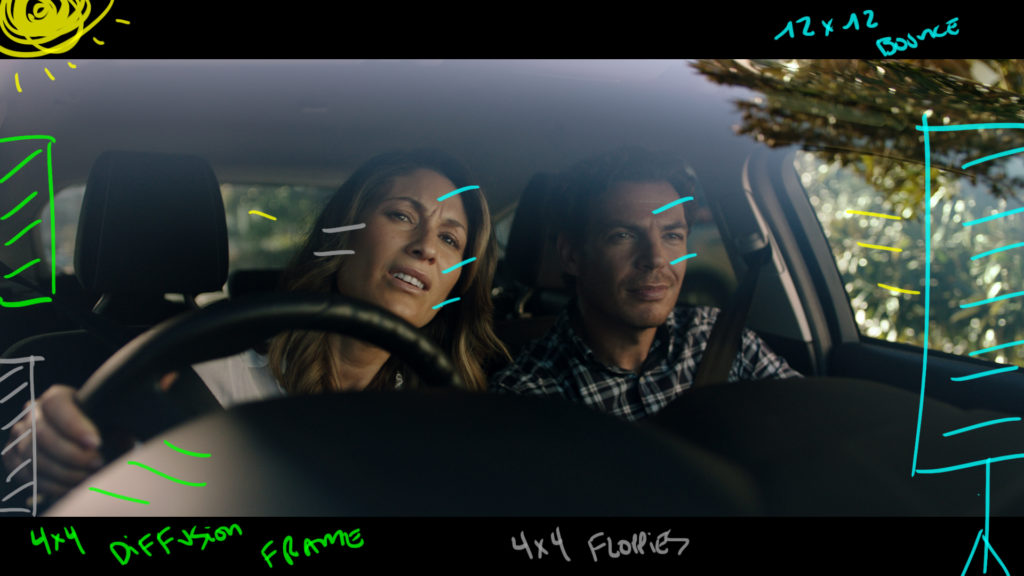
The Bedroom - Waking Up
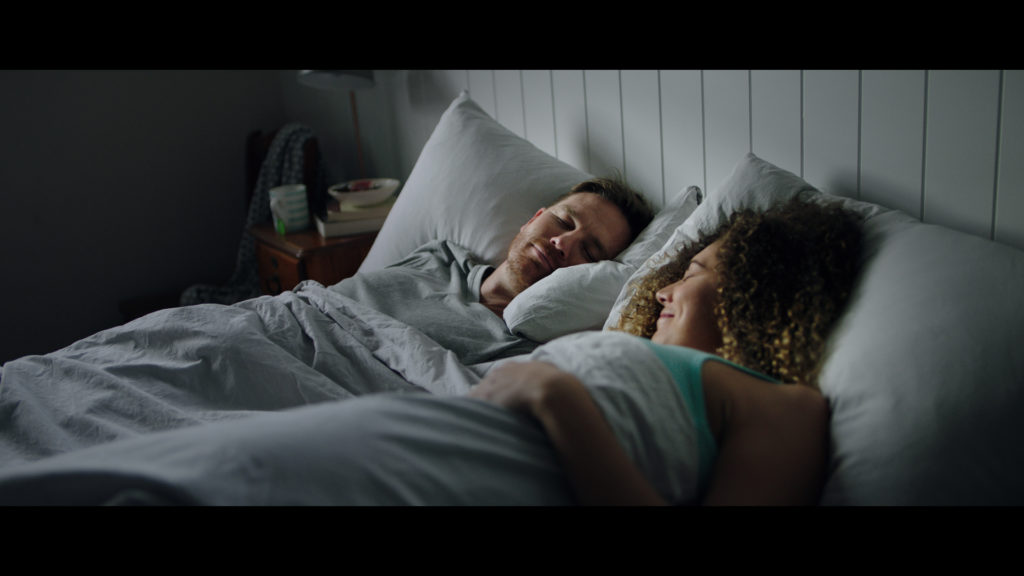
The Shot
We were now inside. We need a two shot of a couple waking up on an early morning.
The Lighting
Outside was grey and rainy so we needed to BYO sun.
We also needed to be fast so we dropped an M90 out the window through a 4x4 frame and then softened again just on the outside of the window.
Inside we had some 4x4 floppies up on the shadow side to kill some of the bounce back from the walls. We warmed up the outside lamp with some CTO and that was it.
The Results
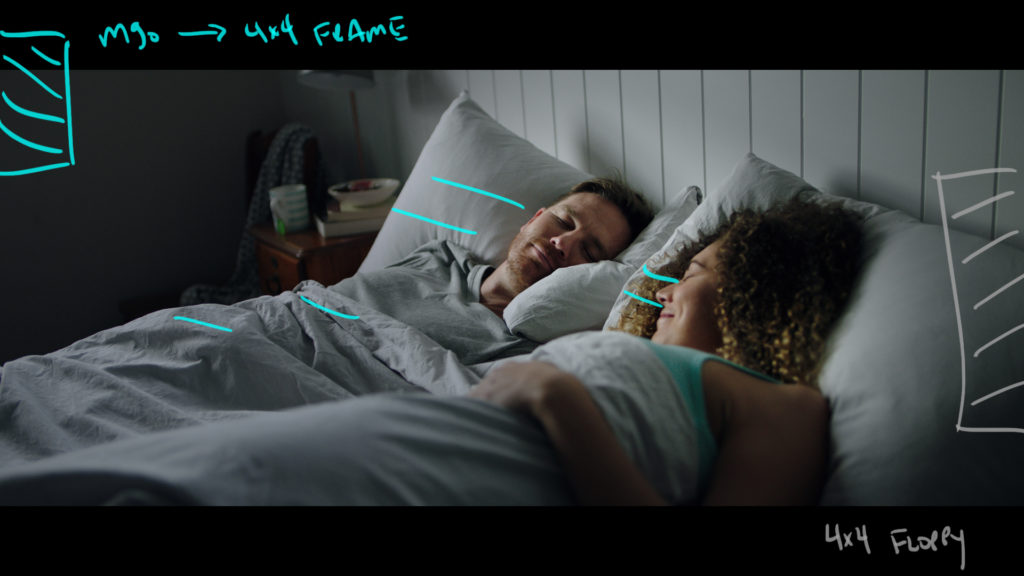
Behind the Scenes
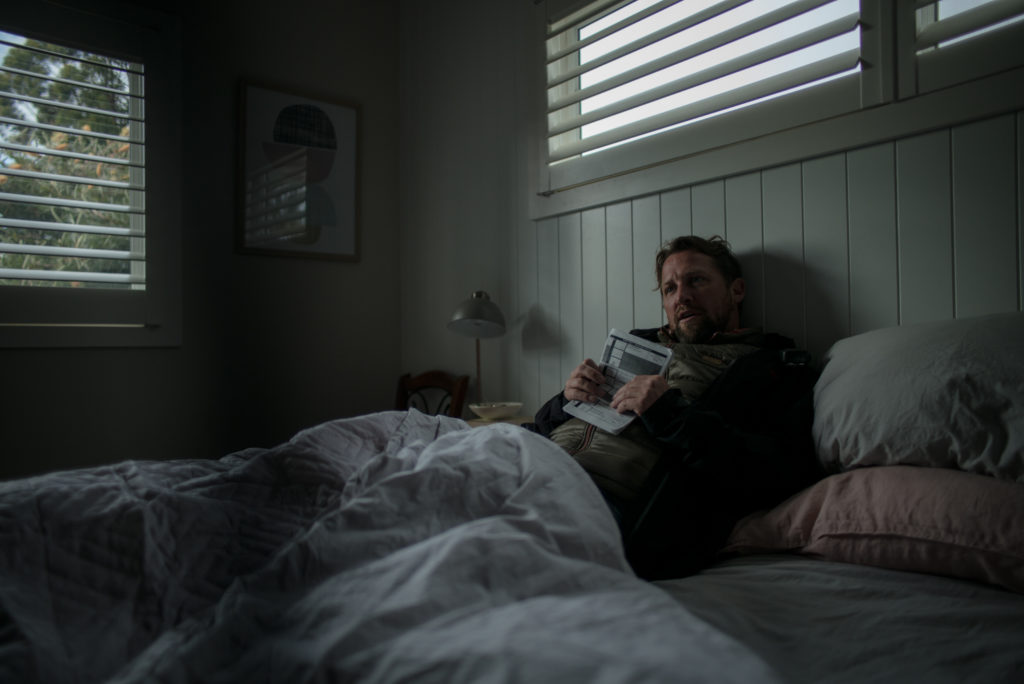
The First AD standing in on the morning of the shoot.
Night for Day - The Cafe
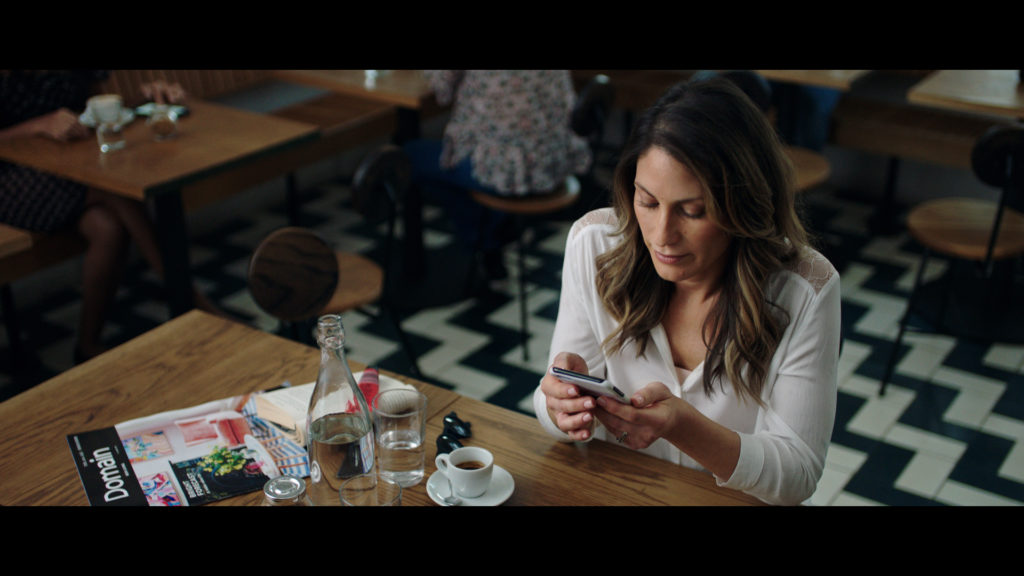
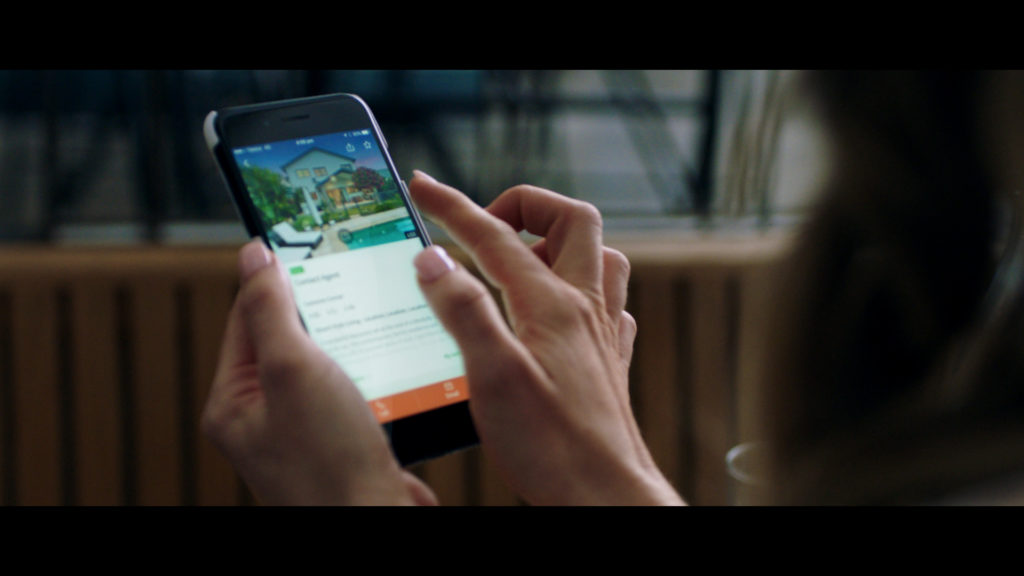
The Shot(s)
These shots start our "Standards" of people looking on phones. The set ups were all almost identical. Medium of person looking on phone then CU of phone.
The Lighting
We wanted the phone back lit on the second shot so it played perfectly with upstage lighting in the medium.
There is an M40 through a Magic CLoth textile camera left giving us the nice soft key. Then a Litemat 4 from Lite Gear for an edge on her hair and a few floppies on the shadow side for shape.
We were in the cafe at night so it was again BYO key light.
For the phone shot we lifted the levels in the BG with the 4k and kept everything else the same.
The Results
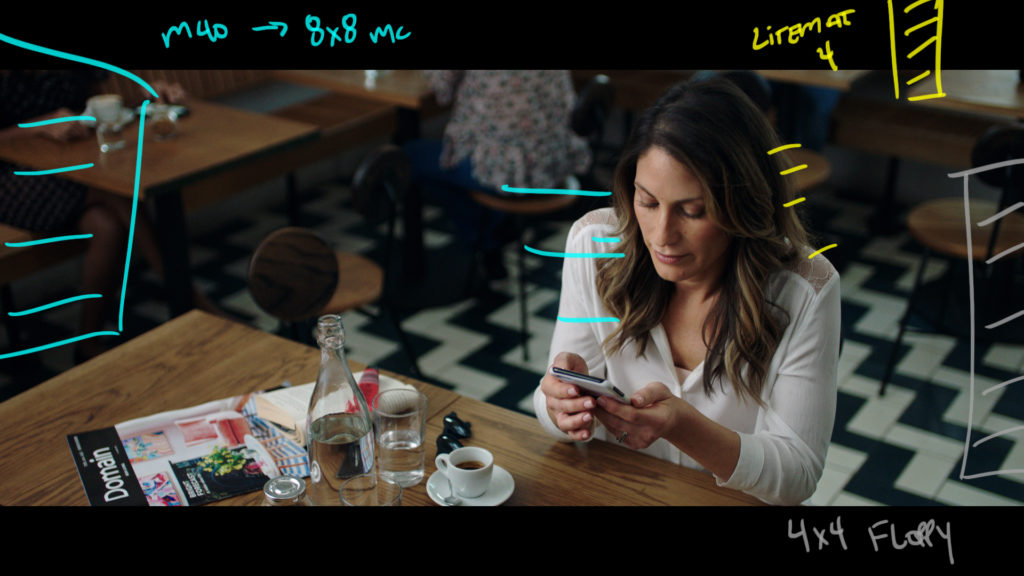
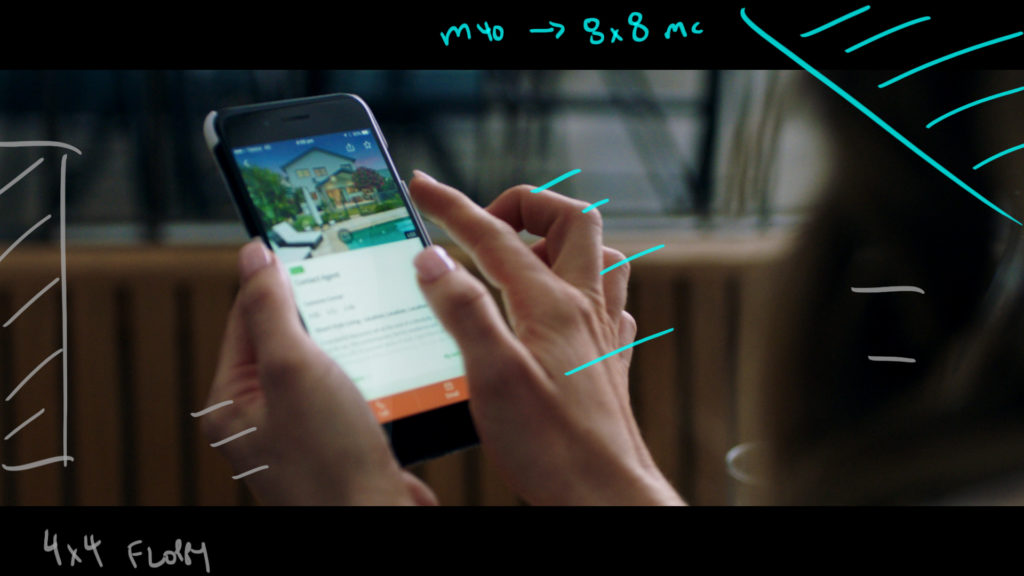
Grey Skies - Insert Sunshine
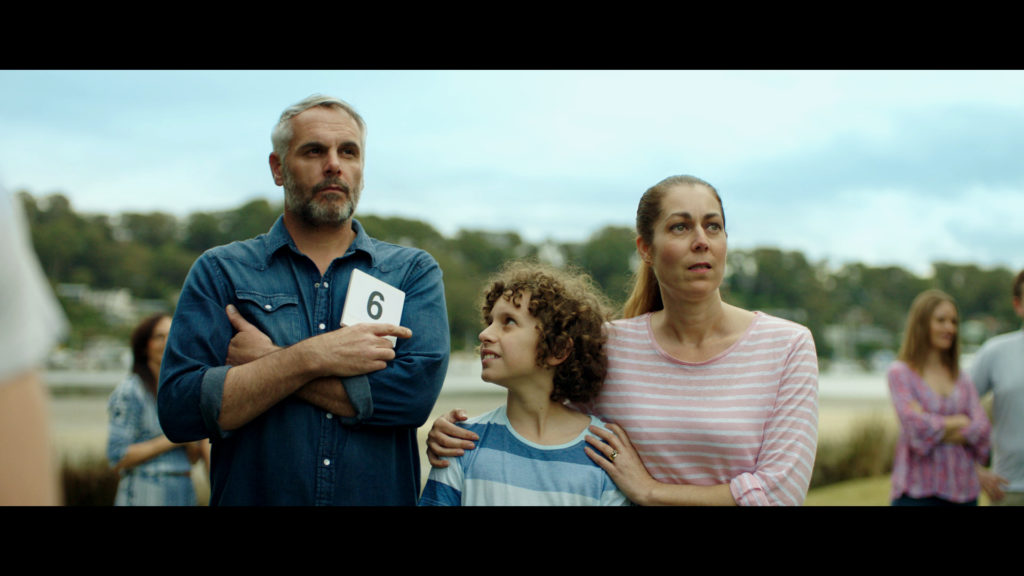
The Shot
A family bidding on a house at auction. Light and bright was the brief.
The Lighting
Light and bright was the brief but dark and cloudy was the forecast. With some Neg Fill from camera left and some soft overcast sun we got to this result.
Add a bit of blue into the sky for the grade and we are off to the races.
The Results
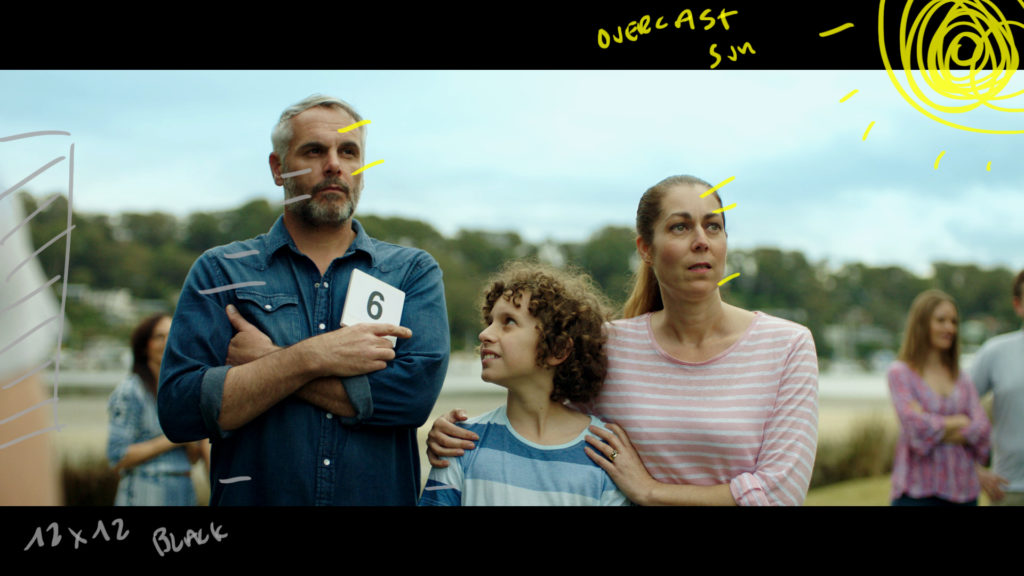
The Phone - Commercial Cinematography Standards
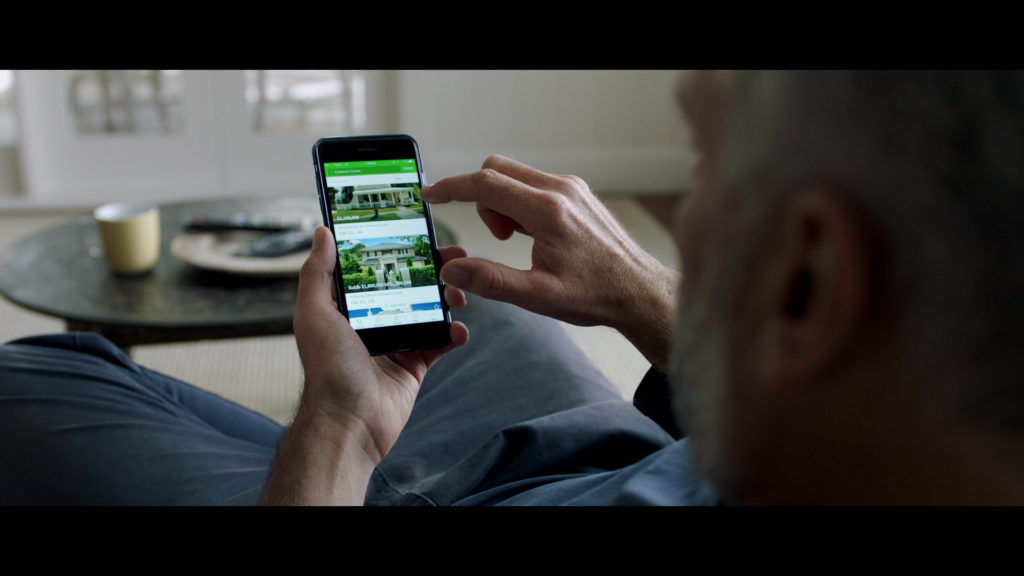
The Shot
Another in our series of phone shots.
The Lighting
We have an M90 outside going through a 6x6 of 1/4 grid and that is all the light we needed. The light is shaped by the actual location windows to keep it off the wall in the BG.
Inside we had two 4x4 floppies to add some shape to our talent's face.
The Results
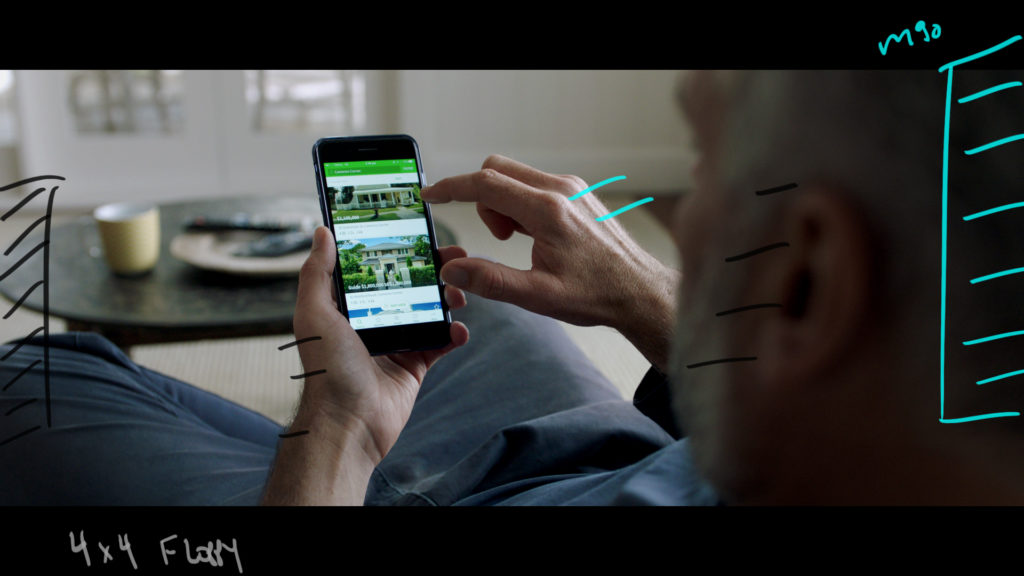
Table Top Shots - Commercial Cinematography Standards
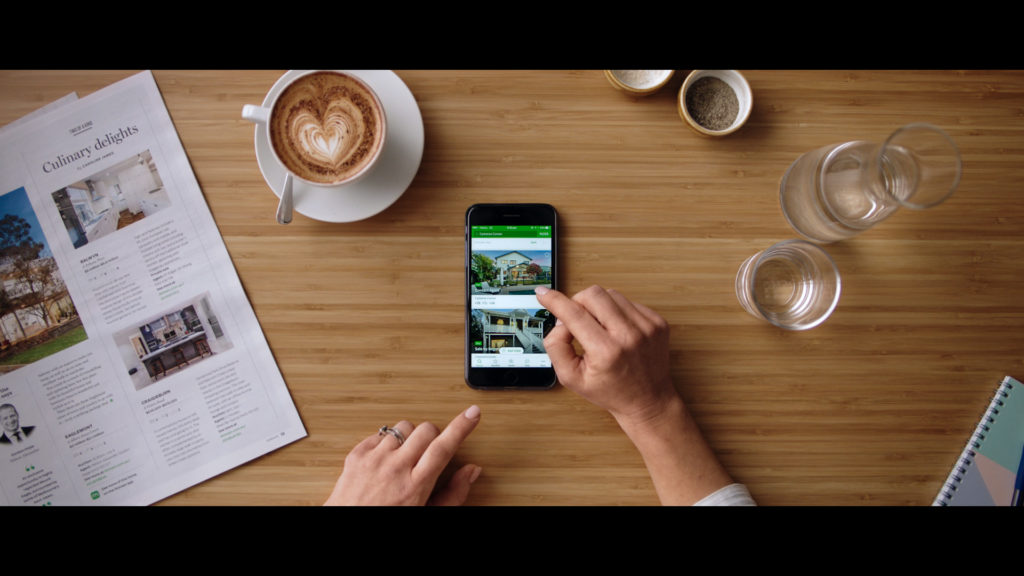
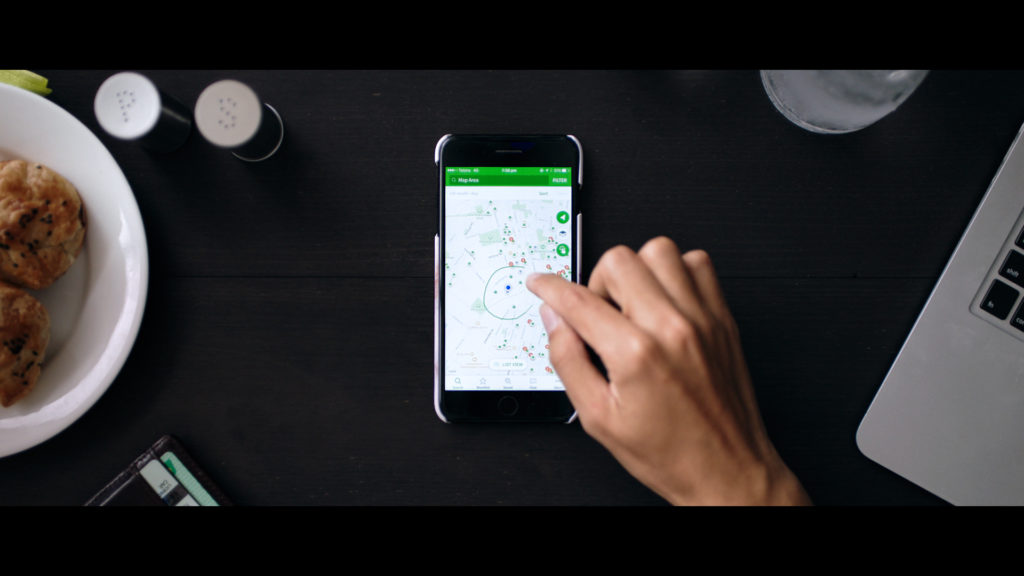
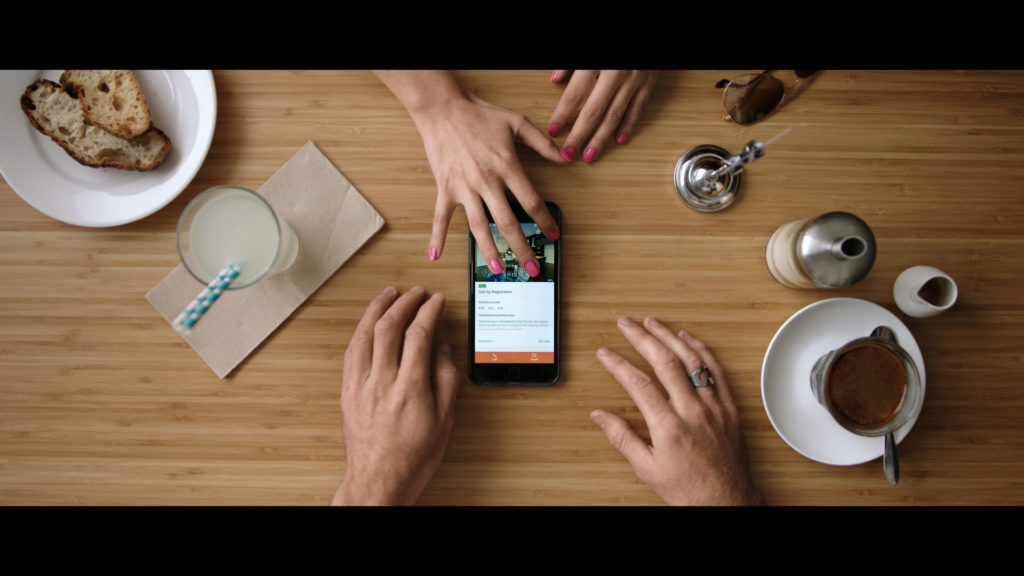
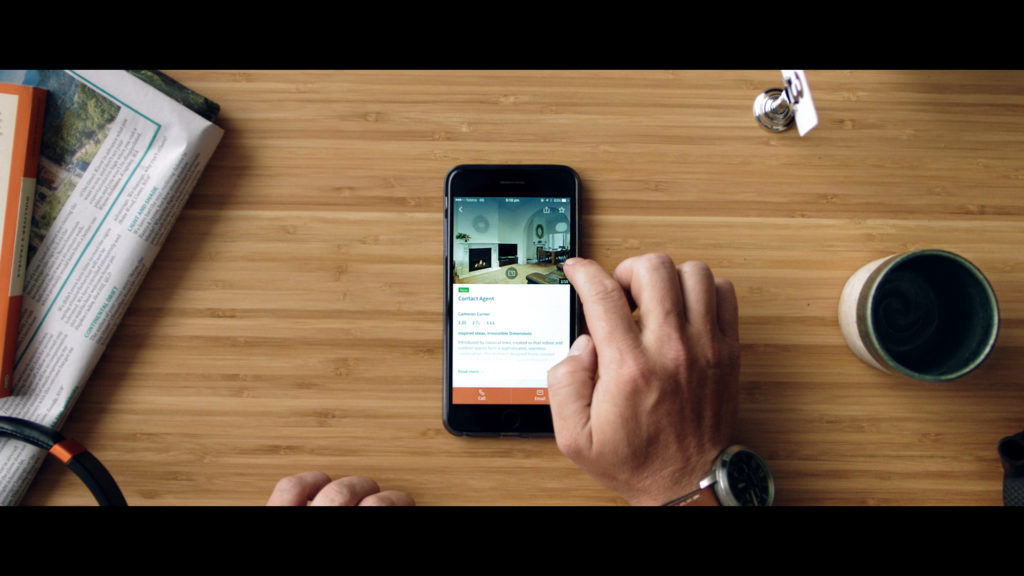
The Shot(s)
The table top classics. Straight down with various hands operating a non-cg phone.
The Lighting
This was all in the same location of the cafe and night time.
We used the same lamp (an Arri M40) through Magic cloth for our key from camera left.
Then to add some contrast brought in 4 floppies edged around the table. We gauged all the levels to match were we needed the phone images to sit and we were home.
The Results
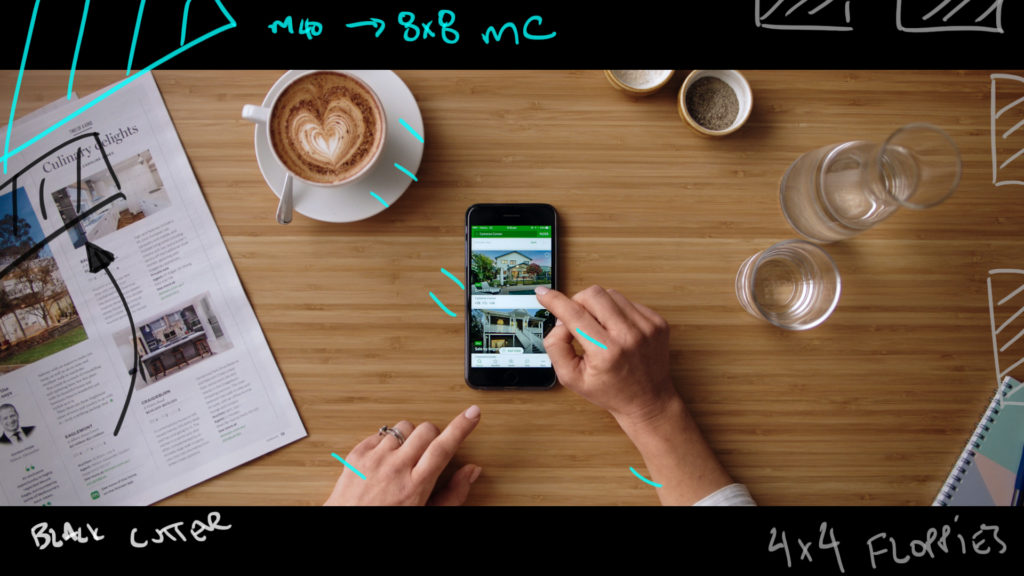
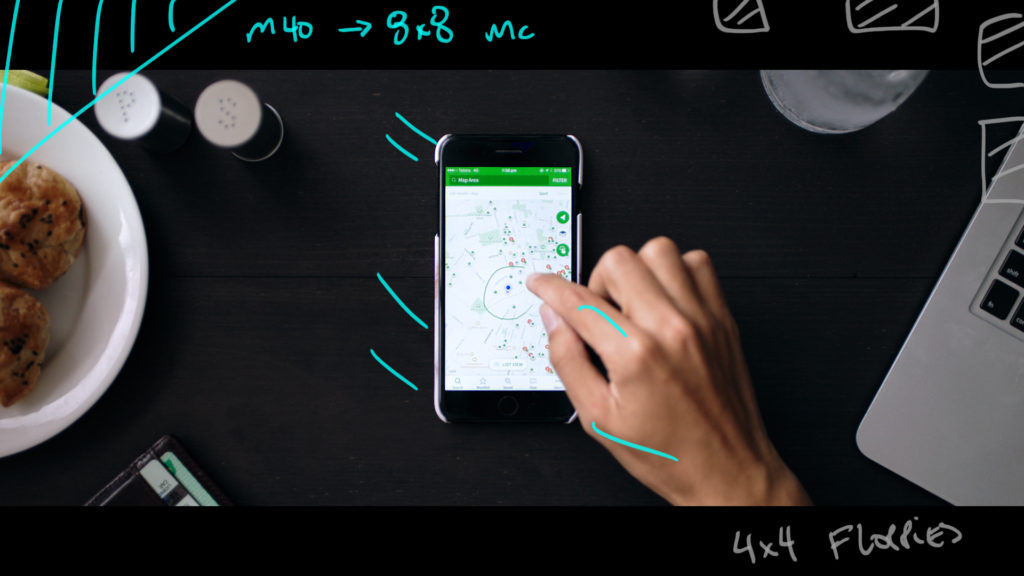
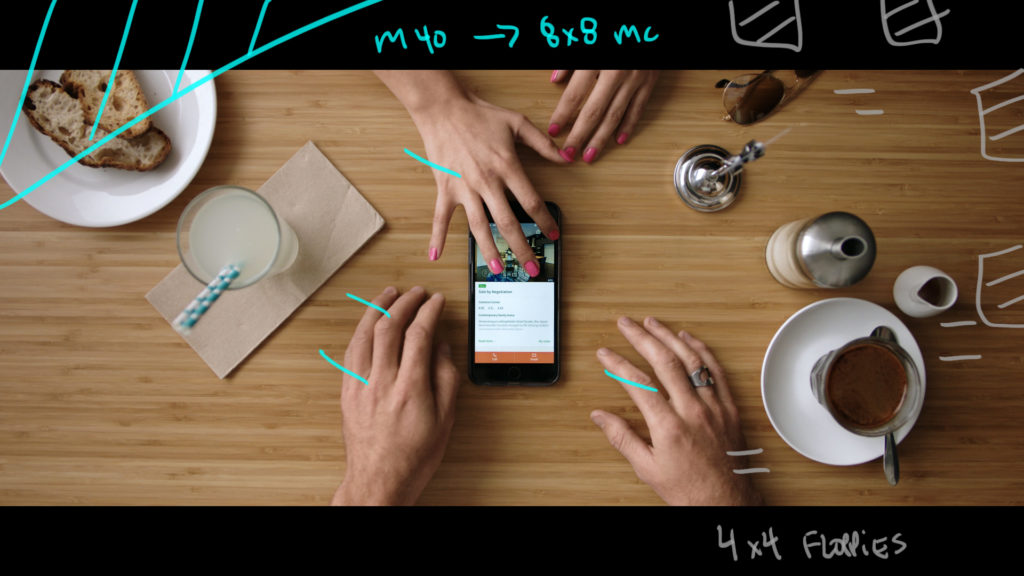
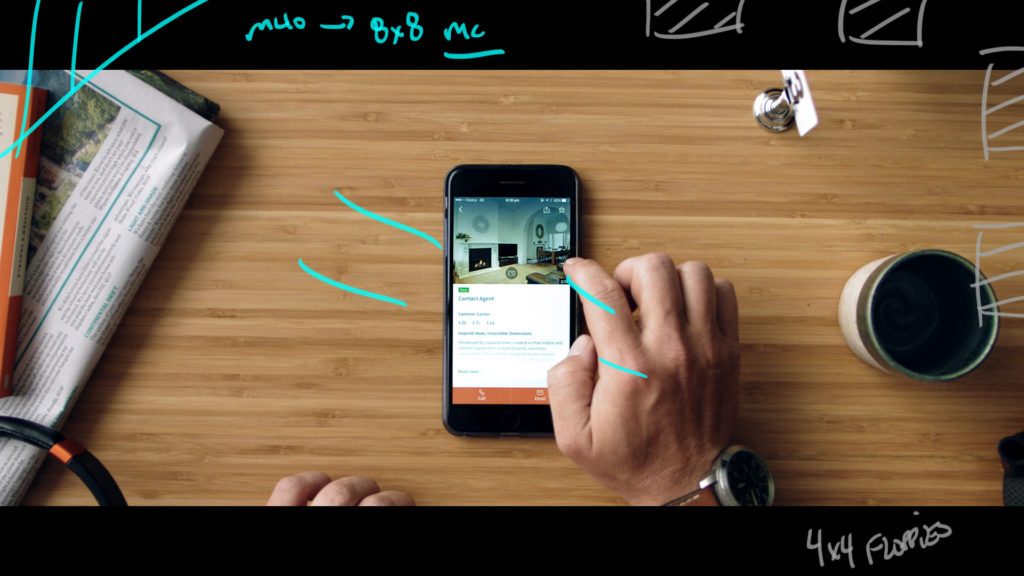
Behind the Scenes
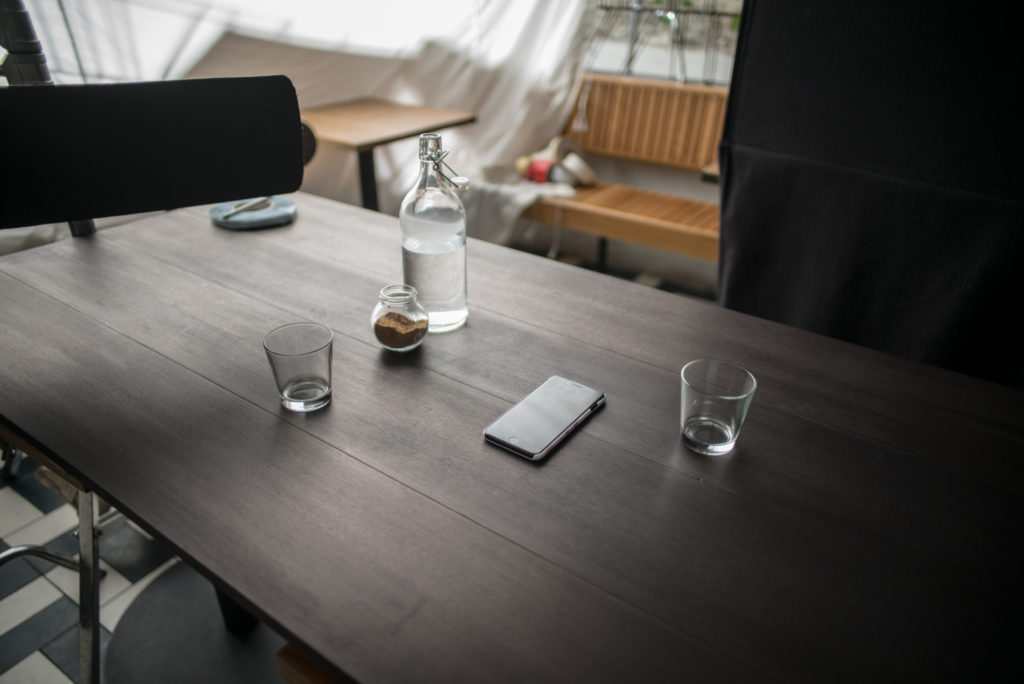
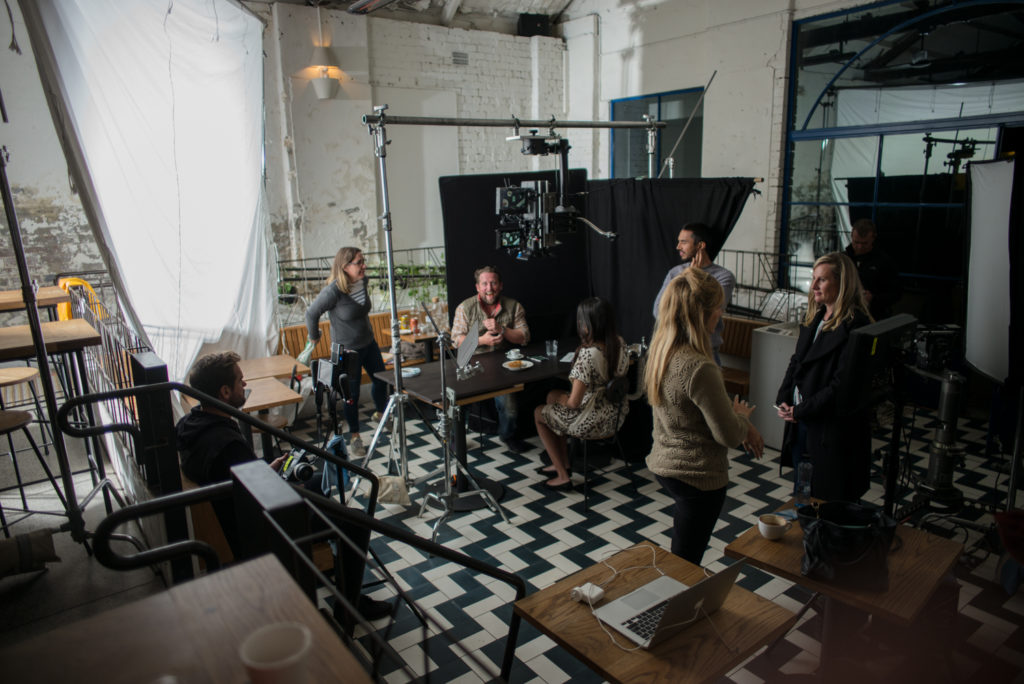
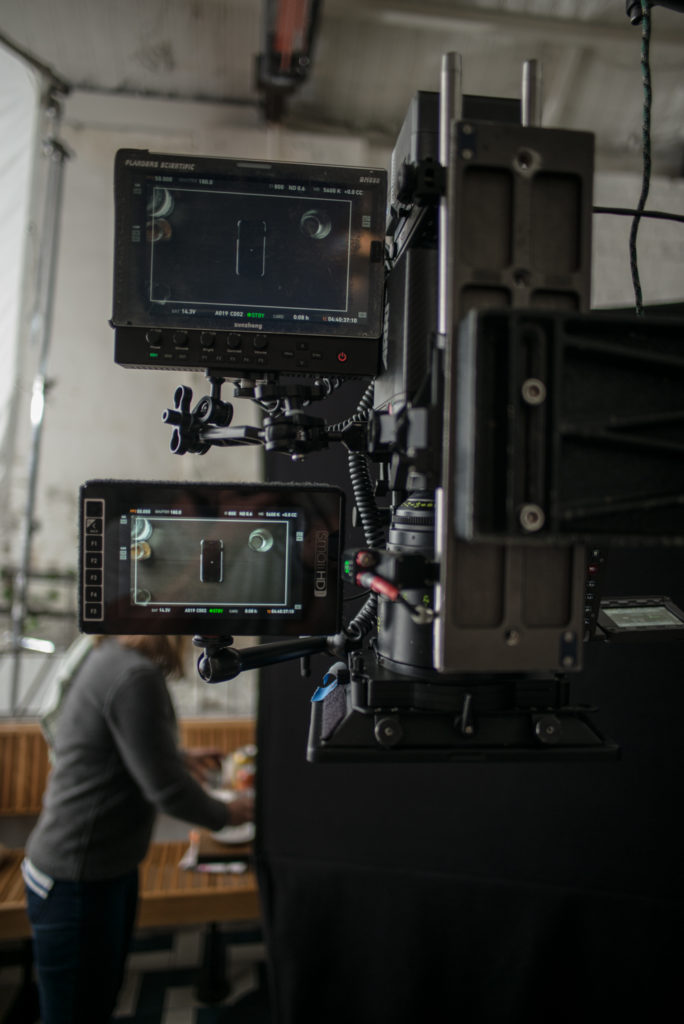
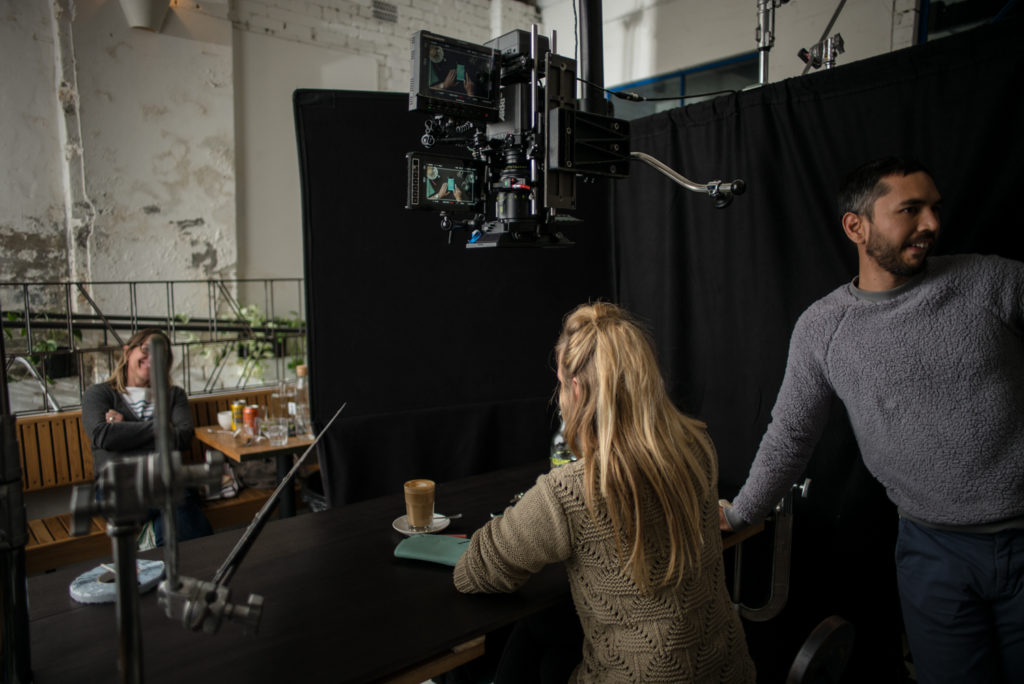
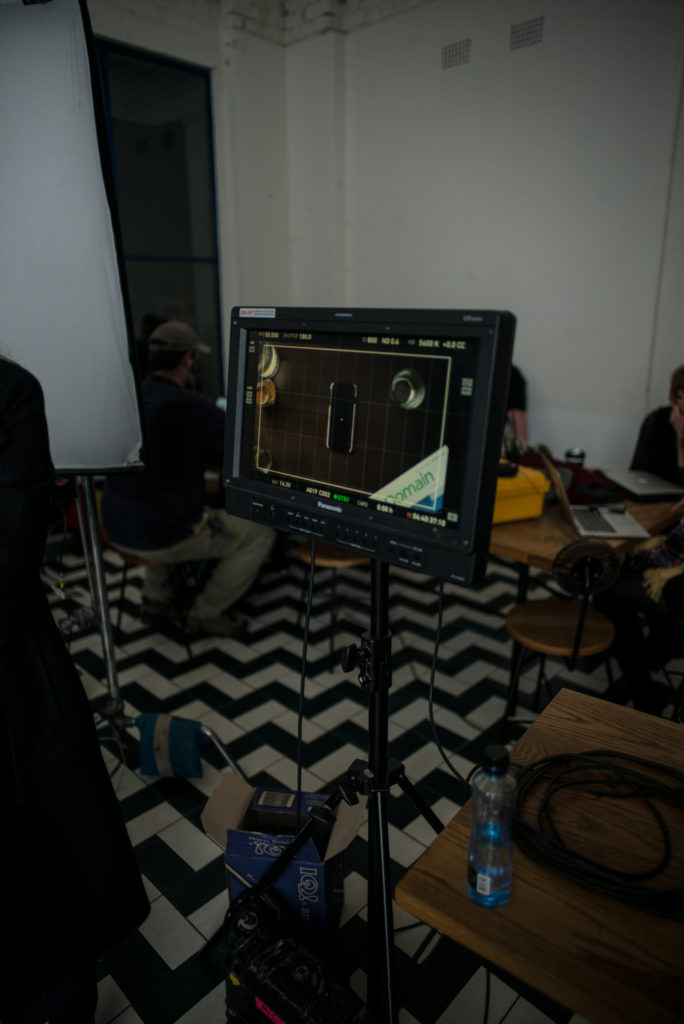
The Commercial Cinematography Standards
These jobs are textbook retail commercial cinematography. You have a skill that can help someone make something people want to buy. It may not align with your own sensibilities but you can still work hard to make it look rich and interesting.
Every lighting set up may look similar but each has their own unique challenges. Practicing the skills you need to make these shots pop can help you down the line in all facets of the job.


Best DPing content in the internet ! Keep it on Patrick. Long live wanderingdp podcast !
Wow awesome stuff once again. I’m doing a table top shoot exactly the same.
Any extra tips on this would be much appreciated? i.e. Lens choices, F-stop, ND,
stopping reflections. Keep up the amazing work!